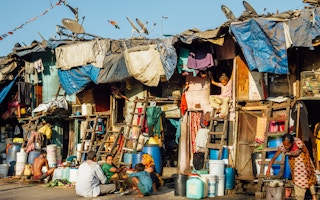Hundreds of millions of children and adults in Asia’s rapidly expanding cities are undernourished, and will remain so without “inclusive, sustainable and nutrition-sensitive” urban planning, United Nations officials said on Friday.
The Asia-Pacific region has the world’s highest rate of urbanisation, while also being home to more than half the world’s 821 million undernourished people, four UN agencies said in a report released in Bangkok.
“Progress in reducing undernourishment has slowed tremendously,” said the regional heads of Food and Agriculture Organization (FAO), the UN Children’s Fund (UNICEF), the World Food Programme (WFP) and the World Health Organization (WHO).
“As migration from rural to urban areas continues apace, particularly involving poorer families, urban malnutrition is a challenge facing many countries,” they said in a statement.
World hunger rose in 2017 for a third consecutive year due to conflict and climate change, jeopardising a global goal to end the scourge by 2030, the United Nations said in an earlier report.
At the same time, more than one in eight adults is now obese, with the Asia-Pacific region recording the fastest growing prevalence of childhood obesity, fuelled by easier access to processed foods rich in salt, fat and sugar.
Rapid urbanisation is a key factor in both, the rising levels of malnutrition and obesity, in Asia and the Pacific.
China and India, the world’s most populous countries, are expected to account for more than a fourth of the projected growth in the global urban population by 2050, adding about 690 million to their cities.
Historically, urbanisation has been seen as a sign of social and economic transformation, associated with higher standards of living, including better health and nutrition.
“However, if not managed well, rapid urbanisation can also lead to dysfunctional food systems, resulting in undernutrition and obesity occurring within the same city or even the same household,” the report noted.
“It is therefore important to ensure that the rapidly expanding cities in Asia and the Pacific are planned in an inclusive, sustainable and nutrition-sensitive manner.”
“
The world cannot meet the 2030 target of zero hunger if Asia and the Pacific is not leading the way.
The challenge is exacerbated by the rising numbers living in slums. About one-third of the urban population is in slums with limited access to welfare benefits and safety nets, which impacts on their food security, nutrition and livelihoods.
In addition, informal food markets and street vendors that provide cheap and convenient meals to the urban poor are increasingly under attack in many Asian countries including Thailand and Malaysia.
Urban food policy in the region must take into account transport, infrastructure, housing, education, and water and sanitation for greater impact, the report noted.
“Urban planners must become new nutrition partners,” it said.
“The world cannot meet the 2030 target of zero hunger if Asia and the Pacific is not leading the way. The sense of urgency cannot be overstated.”
This story was published with permission from Thomson Reuters Foundation, the charitable arm of Thomson Reuters, that covers humanitarian news, women’s rights, trafficking, property rights, climate change and resilience. Visit http://news.trust.org)










